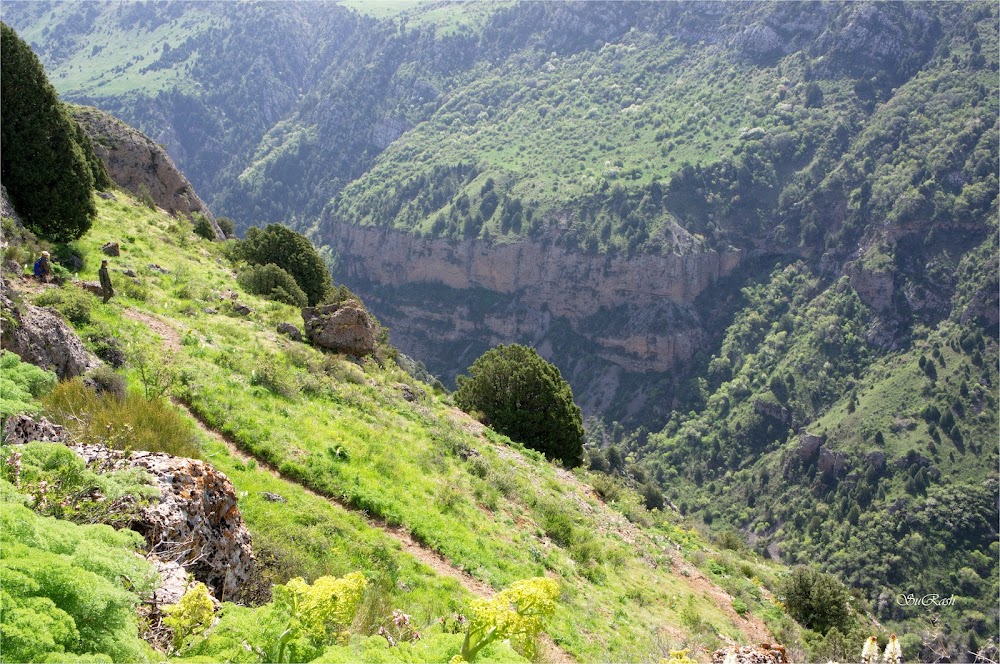Shamsi Mausoleum (Шамси мавзолейи)
Overview
Located in the verdant and culturally rich **Jalal-Abad Region of Kyrgyzstan**, the Shamsi Mausoleum stands as a remarkable testament to the region's historical and architectural heritage. Just a few kilometers from the city of Jalal-Abad, this impressive edifice invites visitors to step back in time and admire the intricate artistry that flourished centuries ago.
The **Shamsi Mausoleum** dates back to the early medieval period, around the **10th to 12th centuries**. This era marked a time of significant cultural exchange and development in Central Asia. Thought to be the tomb of a prominent local figure or a revered religious leader, the exact identity of the individual interred here remains a mystery. The mausoleum reflects the socio-political and religious landscape of its time, making it a captivating subject for history and archaeology enthusiasts.
The **architectural style** of the Shamsi Mausoleum is distinct and offers invaluable insights into the construction techniques and aesthetic preferences of its era. Primarily constructed from bricks—a common material in Central Asian architecture—the design embodies elements of Islamic architecture. Visitors can observe its pointed domes, arched doorways, and intricate brickwork patterns. The exterior walls are adorned with geometric and calligraphic designs, holding both decorative and spiritual significance, as they reflect the Islamic tradition of favoring abstract motifs over figurative imagery.
As you walk through the mausoleum, you can’t help but marvel at the craftsmanship on display. The ornamental detailing on the walls and ceilings showcases the high level of skill possessed by the artisans of that period. Each brick appears to have been meticulously placed, and the intricate patterns continue to captivate visitors centuries after their creation. These elements not only provide visual delight but also serve to educate visitors about the cultural and spiritual beliefs of the people who built and used the mausoleum.
Beyond its architectural beauty, the **Shamsi Mausoleum** holds significant historical importance. It serves as a cultural bridge, connecting the present with the past and providing a tangible link to the region's rich heritage. For historians and archaeologists, the site offers valuable insights into medieval Central Asia, especially regarding funerary practices, architectural innovations, and the spread of Islamic culture.
Interestingly, the mausoleum is steeped in **local folklore and legends**. Tales passed down through generations often depict it as a mystical place, with some suggesting that it was constructed in a single night by supernatural beings. While these stories add an element of mystery and allure, they underscore the deep cultural significance of the mausoleum to the local community.
For foreign tourists, a visit to the **Shamsi Mausoleum** is more than just a sightseeing trip; it is an opportunity to explore the confluence of history, culture, and art. The serene surroundings create a peaceful backdrop, allowing visitors to immerse themselves fully in the experience. You can take a leisurely stroll around the site, absorb the historical aura, and reflect on the timelessness of human creativity and devotion.
**Practical information** for visitors includes the fact that the mausoleum is easily accessible from the city of Jalal-Abad. Local guides are often available to provide detailed tours, sharing in-depth stories and historical context that enrich the visit. Tourists are encouraged to respect the cultural and religious significance of the site, ensuring a considerate approach throughout their exploration.
In conclusion, the **Shamsi Mausoleum** in the Jalal-Abad Region of Kyrgyzstan is a hidden gem that offers a rare glimpse into the architectural and historical tapestry of medieval Central Asia. Its intricate design, historical significance, and the legends surrounding it make it a compelling destination for anyone interested in delving into humanity's past. A visit to this serene and evocative site promises not just education and inspiration but also a profound appreciation for the enduring legacy of those who came before us.



